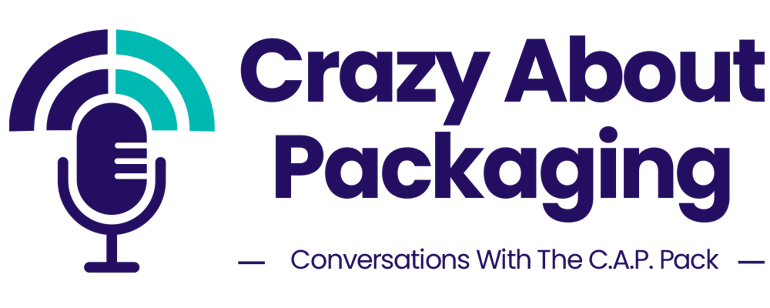
Around the world, governments are taking a keen interest in sustainability and food-safety — which means they're implementing regulations that have a big impact on the packaging industry. Whether it's California or the UK, sustainable food packaging regulations and those related to chemicals in food packaging are transforming manufacturing norms.
In our latest episode of the Crazy About Packaging podcast, the C.A.P Pack explores our experiences with packaging regulations and the changing industry landscape.
Sneak Peek for Episode #6
Check out the latest podcast to hear our take on this complex issue. You can watch or listen on our website or subscribe on Spotify, Apple, or Google. Want a sneak peak? Read on to see some of the key points we cover.
Regulations that Apply to the Packaging Industry
There's no shortage of regulations out there, but it's important to cut through the noise to identify which regulations actually apply. In this episode, we cover a few key ones, including:
- Proposition 65. This California law requires businesses to provide warnings to residents of California if a product contains certain harmful chemicals. While this covers over 900 materials, the biggest impact for the packaging industry comes from styrene. The material is considered a possible human carcinogen — meaning that any manufacturer using styrene whose products are sold in California is required to label their products as potentially harmful.
- UK Plastics Packaging Tax. Introduced in 2022, this regulation applies a tax rate to plastic packaging that is made of less than 30% recycled content. The tax is pushing UK retailers who sell products in plastic packaging to achieve the 30% threshold to avoid the cost, meaning they are more likely to purchase products that are sold in sustainable food packaging.
- Extended Producer Responsibility. While not a law (yet), extended producer responsibility is a guideline that is beginning to shift responsibility for sustainability and safety to the producers. While this is relatively new, Mike explains why he thinks it's a positive shift. "I embrace extended producer responsibility because if you embrace it, you have some control over the formats and the outputs. Otherwise, we're just waiting for legislators… to decide what I'm going to have to do, and I don't think that's a good idea for any producer to have no say in that process."
Finding a Single Solution
One odd thing about navigating these regulations is they cover a broad scope, even if they technically only apply to a certain geography. Take Proposition 65, for example. Technically, producers only have to notify citizens of California if they’re using styrene or other harmful chemicals in food packaging. Despite being region-specific, these regulations have far-reaching effects due to the interconnected nature of global markets.
Natalie asked Mike and Jonathan for their take on the widened impact of state or country regulations. "It's a California law and regulation. But these CPGs aren't saying to themselves, ‘We're just gonna create something new for California.'"
Mike’s thoughts? "That is a really good point because most of the CPGs that we've talked with really have to consider the fact that they can't have two packaging formats — one for California and one for other business. The scale of what they're doing requires a concise monolithic approach to how they package, how they label, and what materials they use. There's no way that they could safely do two different formats."
For CPGs who operate in multiple areas of the world, all of these regulations are important and may overlap. For that reason, they need a single safe, sustainable food packaging solution to ensure they don’t violate regulations in certain markets.
A Shortening Timeline
As the regulatory landscape continues to evolve, understanding and anticipating these changes is crucial. The shift towards sustainable food packaging isn't just a trend — it's a fundamental change that will define the future of the industry.
Right now, regulations are being created in all areas of the world. It might seem like a CPG who doesn’t operate in California or the UK could continue their current process for the time being, but the C.A.P Pack explains why there’s such a push to make a change now. Simply put? No matter where you are, change is coming soon — by operating preemptively, CPGs can avoid falling behind when the regulations eventually do start applying to them.
Natalie sums it up best, "There are more stringent regulations coming down, and I think this is a trend that we expect to continue. It's not going to go back the other way. At the same time, I think the industry itself is working very hard to do a lot of the pre-work that goes into this because in previous episodes, we've talked about how material replacement is not just something that you can snap your finger on. So while some of these guidelines or regulations regarding sustainability specifically might not necessarily have stringent timelines yet, I think a lot of organizations just see the writing on the wall and are doing that work now so that they aren't caught back on their heels when this does in fact become more of a mandated situation."
Talk Sustainable Food Packaging with the C.A.P. Pack
What are your thoughts on the government regulations affecting the packaging industry? Have you been searching for new materials to avoid violating regulations? Are you exploring sustainable food packaging options to meet these new standards? We’d love to hear from you! Follow us on LinkedIn, Facebook, and Instagram and join the conversation! And be sure to listen and subscribe on Spotify, Apple, Google, or our website.



